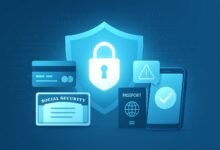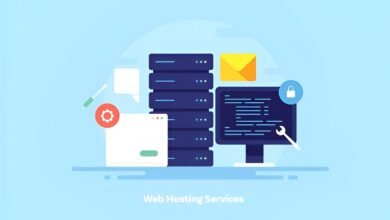Top Cybersecurity Threats to Watch in 2025
This article dives deep into the top cybersecurity threats in 2025, equipping you with the knowledge to protect your data, systems, and networks in a rapidly shifting landscape.

In our increasingly digital world, cybersecurity threats are evolving faster than ever. As we move deeper into 2025, organizations, governments, and individuals must prepare for a new generation of cyber risks. From sophisticated AI-driven attacks to vulnerable Internet of Things (IoT) devices, the digital battlefield is becoming more complex. This article dives deep into the top cybersecurity threats in 2025, equipping you with the knowledge to protect your data, systems, and networks in a rapidly shifting landscape.
1. Artificial Intelligence-Enhanced Cyber Attacks
Artificial Intelligence (AI) has long been hailed for its promise in improving security systems. However, cybercriminals are now harnessing the same technology to develop AI-enhanced attacks. These include self-learning malware, phishing bots, and automated social engineering tools that adapt based on a user’s behavior.
In 2025, threat actors are using AI not only to generate more convincing deepfake videos and voice spoofing but also to automate the detection of security gaps in enterprise systems. The combination of machine learning with massive amounts of stolen data makes these attacks both faster and harder to detect.
The risk is compounded by the fact that defensive AI systems often operate based on predictable rules. When offensive AI is trained to recognize and bypass these defenses, it renders traditional endpoint detection tools significantly less effective.
2. Deepfake Phishing and Business Email Compromise (BEC)
Deepfake technology is no longer just a novelty. It’s becoming a major tool in the arsenal of cybercriminals aiming to exploit human trust. In 2025, attackers are using deepfake audio and video to impersonate CEOs, government officials, or business partners, convincing victims to transfer funds or share sensitive data.
This is an advanced evolution of the classic Business Email Compromise (BEC) attack. Deepfake BEC involves combining authentic-looking messages with fake voice or video calls, drastically increasing the success rate of scams. With access to high-quality samples from social media or past communications, attackers can generate stunningly realistic impersonations.
These attacks bypass traditional email filters, as they appear to come from within the organization. Training employees on voice verification protocols, and implementing multi-factor authentication, becomes essential to combat this growing threat.
3. Quantum Computing Threats to Encryption
Quantum computing promises enormous benefits in fields like medicine and logistics. However, it also poses an existential risk to modern encryption standards. As quantum machines become more powerful, they can potentially break widely used public-key encryption algorithms like RSA and ECC (Elliptic Curve Cryptography).
In 2025, while large-scale quantum computers aren’t yet widespread, researchers have already demonstrated proof-of-concept attacks. Cybercriminal groups backed by nation-states are believed to be stockpiling encrypted data now, with the intent of decrypting it later—a tactic known as “harvest now, decrypt later.”
The transition to post-quantum cryptography is underway, but most systems today still rely on quantum-vulnerable encryption. Organizations must begin auditing their encryption protocols and preparing for quantum-safe alternatives if they hope to stay secure.
4. IoT Vulnerabilities and Smart Device Exploits
The proliferation of smart devices—from home assistants and thermostats to industrial sensors and medical equipment—has expanded the attack surface dramatically. In 2025, IoT devices are increasingly targeted due to their often weak or outdated security protocols.
Many IoT devices lack the ability to receive firmware updates or have hardcoded credentials, making them easy targets for attackers. These compromised devices can be hijacked to form botnets, conduct DDoS (Distributed Denial of Service) attacks, or serve as entry points into larger corporate networks.
What makes this threat particularly concerning is that IoT devices are often deployed in critical infrastructure—factories, hospitals, energy grids—where a breach can have devastating consequences. Adopting zero-trust architecture and segmenting networks is essential to limit exposure.
5. Supply Chain Attacks
Supply chain attacks continue to rise in frequency and sophistication. Instead of attacking a large organization directly, hackers target third-party vendors with weaker security, gaining indirect access to the main target.
In 2025, this trend is accelerating due to the increased interconnectivity between software tools, APIs, and service providers. A single compromised update from a trusted vendor can infect thousands of downstream customers—like in the infamous SolarWinds attack.
As businesses rely more on cloud services, software-as-a-service (SaaS) platforms, and external contractors, managing supply chain risk becomes paramount. Organizations need to assess the security posture of every vendor and implement real-time threat monitoring for all third-party integrations.
6. Ransomware-as-a-Service (RaaS)
Ransomware has evolved into a booming underground business, and 2025 sees the continued rise of Ransomware-as-a-Service (RaaS). This model allows even low-skilled cybercriminals to rent sophisticated ransomware tools on the dark web, splitting profits with developers.
These RaaS groups are operating like legitimate startups—offering 24/7 customer service, dashboards for tracking victims, and even “reviews” from other attackers. High-profile attacks on healthcare, education, and municipal systems have shown how devastating RaaS can be.
Attackers often threaten to leak sensitive data if victims refuse to pay, adding a double-extortion layer to the attack. Businesses must bolster their backup systems, segment networks, and conduct frequent security awareness training to mitigate these threats.
7. Insider Threats in a Hybrid Workforce
As remote and hybrid work continue to be the norm in 2025, insider threats remain one of the most difficult cybersecurity challenges to manage. Employees or contractors—whether acting maliciously or negligently—can expose organizations to massive risks.
With sensitive data accessible from personal devices, home networks, and unsecured connections, the potential for data leaks or unauthorized access has grown exponentially. What’s more, insiders often have legitimate credentials, making it harder for intrusion detection systems to flag their activities.
Mitigating insider threats requires a combination of user behavior analytics (UBA), privileged access management (PAM), and a strong organizational culture of cybersecurity awareness.
8. Cloud Misconfigurations and Data Exposure
Cloud adoption continues to surge, but in 2025, misconfigured cloud settings remain one of the top causes of data breaches. Poorly secured Amazon S3 buckets, improperly set IAM roles, and open APIs give cybercriminals an easy way in.
These misconfigurations often occur because of a lack of visibility, shared responsibility misunderstandings between cloud providers and customers, or rushed deployments. Attackers use automated tools to scan for these vulnerabilities, making even short-term exposures dangerous.
Organizations must implement cloud security posture management (CSPM) tools, enforce least privilege principles, and conduct routine cloud audits to stay protected.
9. Social Engineering and Human Error
Despite all the technological advances, the human factor remains the weakest link in cybersecurity. In 2025, social engineering attacks—from phishing and vishing to pretexting and baiting—continue to succeed at alarming rates.
Cybercriminals use psychology, urgency, and trust to manipulate users into handing over credentials or installing malware. The rise of generative AI has made phishing emails and fake websites more convincing than ever.
Combatting this requires more than just technical defenses. It calls for ongoing user education, simulated phishing campaigns, and clear reporting protocols so employees can recognize and respond to potential threats.
10. API Attacks and Microservices Exploits
Modern applications increasingly rely on APIs and microservices for scalability and flexibility. However, in 2025, these components are becoming prime targets for cybercriminals. Poorly documented, unprotected, or deprecated APIs can serve as entry points into backend systems.
API abuse can lead to data exfiltration, service disruptions, or privilege escalation. Attackers may exploit rate-limiting flaws, manipulate input parameters, or hijack tokens to gain unauthorized access.
Securing APIs requires thorough documentation, regular penetration testing, and the use of API gateways that enforce security policies and monitor for anomalies in real time.
11. Nation-State Cyber Espionage
Geopolitical tensions are increasingly spilling into cyberspace. In 2025, nation-state cyber threats are more active than ever, targeting critical infrastructure, defense systems, financial markets, and research institutions.
These sophisticated campaigns are often carried out by Advanced Persistent Threats (APTs)—highly skilled groups backed by state funding. Their objectives include stealing intellectual property, sabotaging systems, and gathering strategic intelligence.
Detection and prevention are difficult, as these threats often use custom malware, zero-day vulnerabilities, and long-dwell infiltration strategies. Collaboration between private companies, governments, and cybersecurity experts is critical to defending against them.
12. Regulatory Compliance and Cybersecurity Fatigue
With increasing data protection regulations like GDPR, CCPA, and new national cybersecurity laws emerging in 2025, organizations face growing pressure to maintain compliance. However, cybersecurity fatigue is a real problem, especially among smaller businesses.
The constant need for audits, reporting, and documentation can lead to burnout, corner-cutting, or even non-compliance. Meanwhile, cybercriminals are aware of these stress points and often time their attacks during periods of change or distraction.
Using automated compliance tools, adopting cyber insurance, and building a resilience-focused security strategy can help organizations keep pace without overwhelming their teams.
Final Thoughts
As we look ahead in 2025, it’s clear that cybersecurity threats are becoming more diverse, more intelligent, and more destructive. Organizations must evolve from a reactive to a proactive security posture, investing in continuous monitoring, AI-driven threat detection, and a zero-trust framework.
From AI-enhanced attacks to quantum computing challenges, the digital battleground is rapidly changing. Staying informed, training employees, and adopting best practices across every layer of your tech stack will be essential in the fight against tomorrow’s cyber threats.
Cybersecurity is no longer just a technical issue—it’s a strategic business priority. The cost of inaction is far too high.







